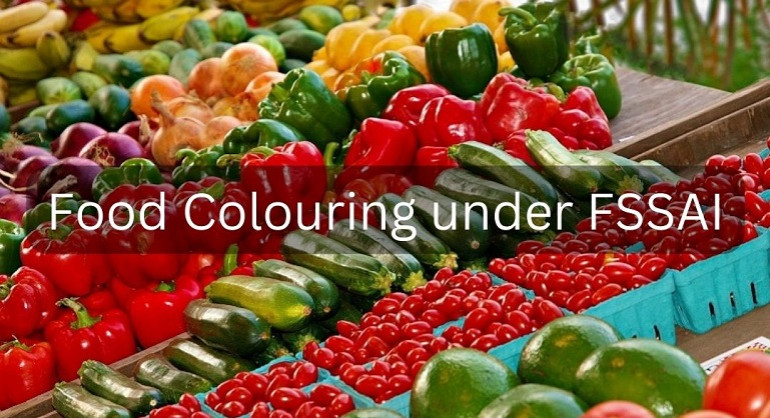

Food Colouring under FSSAI
Colour has an important implication as far as food is concerned as it plays a major role in the taste and perception of food along with flavor and texture. It is a known fact that if the food does not look attractive then consumers will probably reject it. So that food appeals to customers and is accepted by them, the manufacturers add color, but at the same time try to retain its natural looks, as far as possible. Natural appearance is always more appetizing than anything that looks unusually colored. In fact, most consumers believe that colors in foods are their natural colors even though many foods could contain added artificial colors.
FSSAI regulations on food colours
The FSSAI regulations for food colouring are covered under the category ‘Colouring Matter’ in the Food Safety and Standards (Food Products Standards and Food Additives) Regulations, 2011. The regulations say that no colouring matter may be added to food unless permitted in these regulations. The colours specified in these regulations, when used in the preparation of any article of food, shall be pure and free from any harmful impurities.
FSSAI permits the use of the following whether derived naturally or manufactured artificially.
Carotene & Carotenoids including Beta-carotene, Beta-apo 8?- carotenal, Methyl ester of Beta-apo 8? carotenoic acid, Ethyl ester of Beta-apo 8? carotenoic acid, Canthaxanthin
Chlorophyll;
Riboflavin (Lactoflavin).
Caramel
Annatto
Saffron
Curcumin or turmeric
Annatto is to be prepared only in permitted edible oil as listed in regulations and the use must be mentioned on the label.
The synthetic colours that are permitted to be used are mentioned below.
Red from: Ponceau 4R, Carmoisine, and Erythrosine
Yellow from: Tartrazine and Sunset Yellow FCF
Blue from: Indigo Carmine and Brilliant Blue FCF
Green from: Fast Green FCF
Food products in which FSSAI permits colour as an additive
Ice-cream, milk lollies, frozen desserts, flavored milk, yogurt, ice-cream mix-powder
Biscuits including biscuit wafer, pastries, cakes, confectionery, thread candies, sweets, savories (dalmoth, Mongia, phululab, sago papad, dal biji only)
Peas, strawberries, and cherries in hermetically sealed containers, preserved or processed papaya, canned tomato juice, fruit syrup, fruit squash, fruit crushes, fruit cordial, jellies, jam, marmalade, candied crystallized or glazed fruits
Non-alcoholic carbonated and non-carbonated ready to serve synthetic beverages including synthetic syrups, sherbets, fruit bar, fruit beverages, fruit drinks, synthetic soft-drink concentrates
Custard powder
Jelly crystal and ice-candy
Flavour emulsion and flavor paste for use in carbonated or non-carbonated beverages only under label declaration
Synthetic colours have maximum limits this is usually 100 parts per million of the final food or beverage for consumption. However, in some foods and beverages, mentioned in regulations, the maximum limit of permitted synthetic food colours may be up to and not exceed 200 parts per million of the final food or beverage for consumption.
The declaration about the food colours on the label shall be in accordance with the FSS (Packaging & Labelling) Regulations, 2011.



